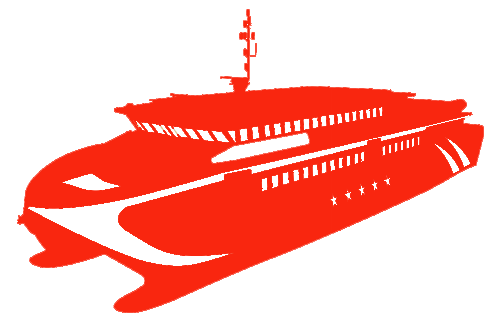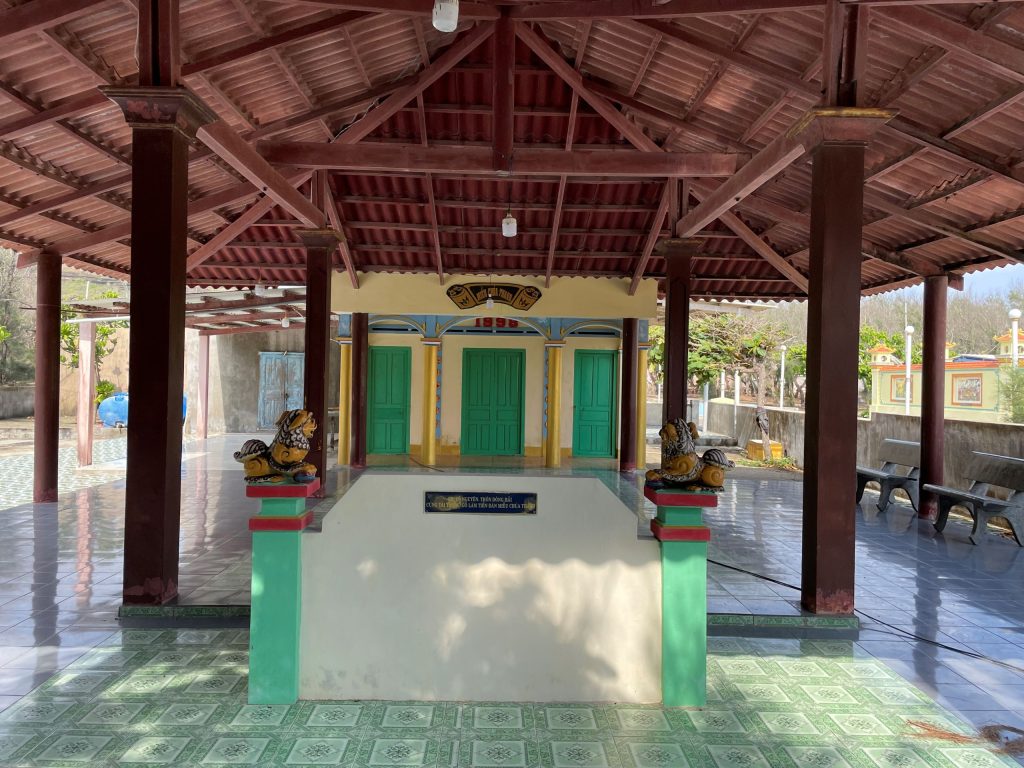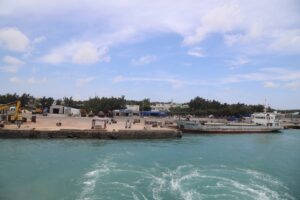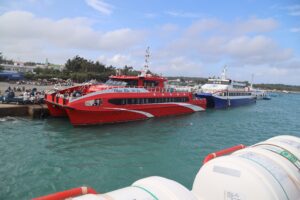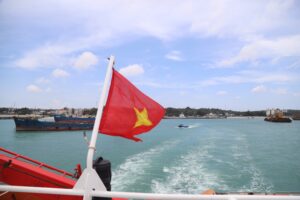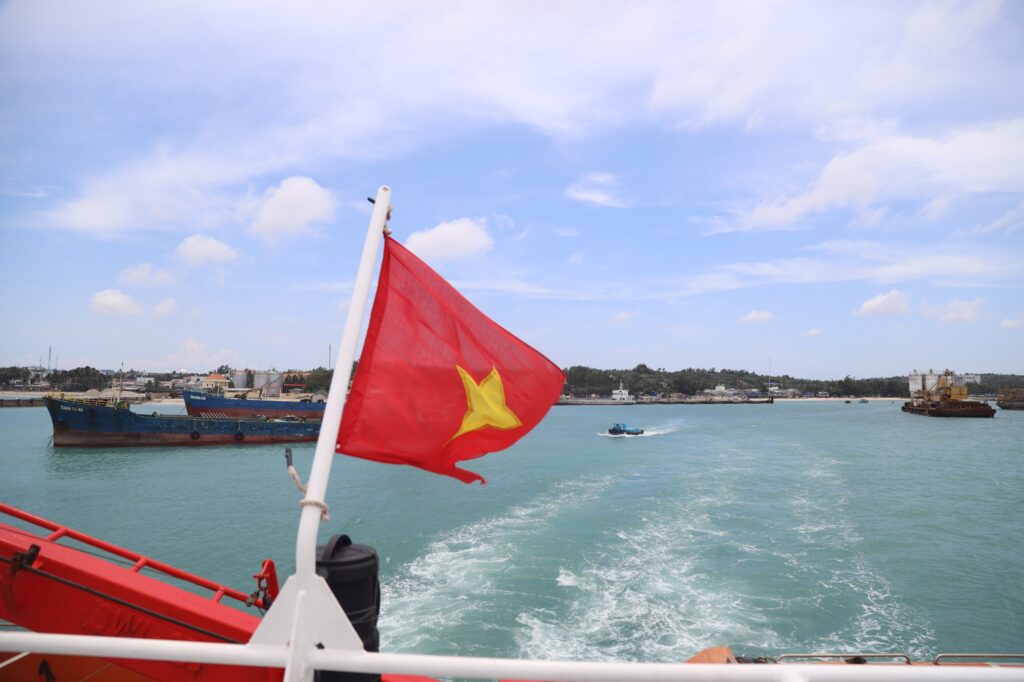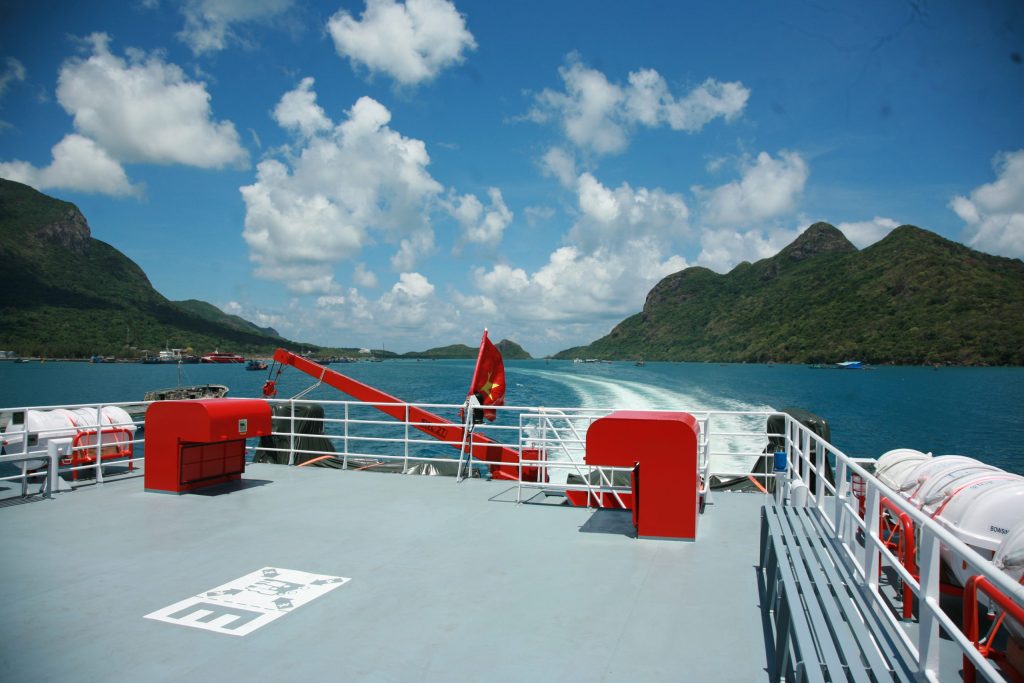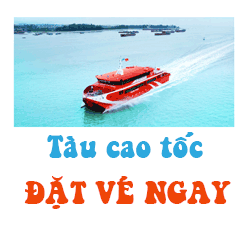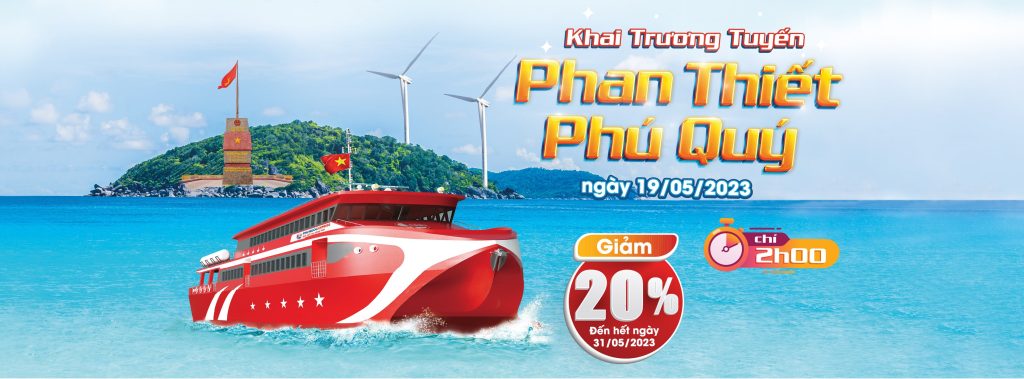Chua Thanh Shrine is located in Long Hai Commune next to Van Lien Thanh fishing village. It was last rebuilt in 1998. It is a small shrine made of cement and concrete, with wooden doors and a tiled courtyard, built through the collective efforts of local people. The shrine is dedicated to the “wandering souls” (co hon) on the island and at sea. During the Thanh Minh Festival (around the beginning of the third lunar month), people come to offer prayers and conduct memorial rituals for the souls without relatives. The rituals alternate yearly between vegetarian offerings and non-vegetarian offerings.
The Vietnamese people of Phu Quy do not call it “worshipping wandering souls” but rather “worshipping Co Bac,” a term expressing respect. Inside the shrine are three altars; on each altar there is a bell used to call and invite the Co Bac to attend the ceremony during worship.
Co Bac are souls of people who died without their bodies being found, those who died tragically or unjustly, and whose spirits remain unsettled and linger in the earthly world. They have no home to return to, no place to stay, no food, and no clothes. People believe those who died at sea are “unexpectedly deceased” and thus are very sacred. Although Co Bac do not possess the power of deities, they can influence human life, making it easier or more difficult depending on how the living treat them. It is believed that if they are not worshipped properly and respectfully, Co Bac may “take” the living with them during work at sea.
When fishing tools and vessels were still rudimentary, risks and dangers were inevitable, and many people died at sea with no trace of their bodies. Worshipping those who died at sea reflects the belief that they have significant spiritual power that affects the lives of seafarers.
On Phu Quy, Co Bac are also worshipped collectively at fishing villages, communal houses, and shrines on altars located in front of the main halls. There are Co Bac worshipped both inside and outside these places. During festivals of these fishing villages or communal houses, joint offerings are made.
Additionally, the Vietnamese on Phu Quy also worship Co Bac at boat docks and beaches. On the 14th, 15th, and 16th lunar days or the 1st and 2nd lunar days, many families bring offerings to the beach — where their boats usually anchor — to perform rituals. After repairing or repainting a boat, the boat owner simultaneously worships both the boat and Co Bac, hoping that Co Bac will bless a smooth and safe fishing season. The local saying goes:
“Out at sea, the Lord gives support; on the shore, Co Bac protect.”
Offerings to Co Bac consist of two tiers: upper and lower. On the higher altar are: one bowl of rice porridge, one plate of fruit, two glasses of water, and one incense bowl (shared by both altars). On the ground level offering tray are: one bowl of rice, one bowl of salt, some snacks, several sugarcane pieces, two glasses of water, and four empty bowls arranged around a large bowl of porridge, plus paper money offerings.
Worship of Co Bac also takes place in pagodas on major full moon days such as the 15th of the seventh lunar month. Pagodas usually organize prayer ceremonies for the souls who died during sea voyages and for Co Bac without homes. This practice of worshipping Co Bac reflects the spirit of sharing, community, mutual support, and compassion between the living and the less fortunate dead. They are not gods but are considered island children — worthy of respect and deserving of life like everyone else, though tragically lost to maritime disasters.


